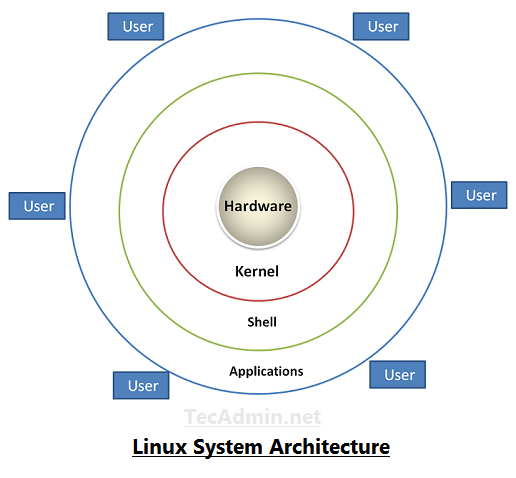Linux Architecture
Linux is a free and open-source operating system that was developed in the early 1990s by Linus Torvalds. It is based on the Unix operating system and has become a popular choice for both personal and enterprise use due to its stability, security, and flexibility.
Linux is built on a modular architecture, which means that it is made up of a number of different components that work together to form a complete operating system. These components are organized into layers, each of which serves a specific purpose and interacts with the other layers to provide the functionality that users expect from an operating system.
The following is a high-level overview of the main layers of the Linux architecture:
- Hardware layer: This is the bottommost layer of the Linux architecture and represents the physical hardware components of the computer, such as the processor, memory, and storage. The hardware layer is responsible for interacting with the various hardware devices and providing access to them for the rest of the operating system.
- Kernel layer: The kernel is the core of the operating system and is responsible for managing the resources of the computer, such as the CPU, memory, and I/O devices. It also provides services to the other components of the operating system and acts as the intermediary between the hardware and the software layers.
- System libraries layer: This layer consists of a set of libraries that provide functions for the applications to use. These libraries include system calls, which are used to invoke kernel functions, as well as other functions that perform tasks such as file manipulation, networking, and memory management.
- System utilities layer: This layer consists of a set of programs that perform various system-level tasks, such as managing processes, controlling user accounts, and configuring system settings. These utilities are usually command-line programs that are invoked by the user or by other programs.
- Desktop environment layer: This layer is optional and is not present on all Linux systems. It provides a graphical user interface (GUI) that allows users to interact with the operating system using a mouse and keyboard. The most common desktop environments in Linux are Gnome, KDE, and Xfce.
- Applications layer: This is the topmost layer of the Linux architecture and consists of the various applications that run on the operating system. These can be anything from productivity software and games to web browsers and media players.
In summary, the Linux architecture is made up of a number of different layers that work together to provide a stable and flexible operating system. Each layer has a specific purpose and interacts with the other layers to provide the functionality that users expect from an operating system.
